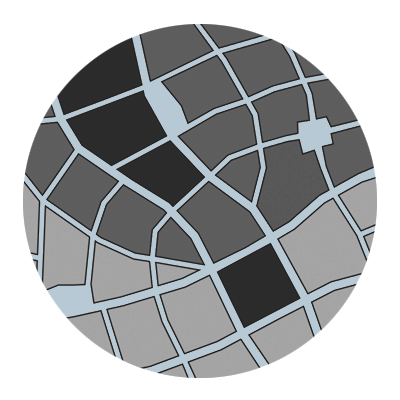A Placemaking Journal
Tonic or Toxic: Reimagining Homeowner Associations
A little over eight years ago I hosted a seminar on Homeowner Associations (HOAs) with my friend and collaborator Doris Goldstein. One of our speakers, David Wolfe, offered a unique perspective on HOAs. David, who had successfully managed hundreds of HOAs without litigation, argued that HOAs retain the personality that they are “born” with. Consequently, if their developer “parent” makes them so that they have little real information on what things cost, they will be unrealistic when it comes time for them to take over costs. If all of the developer’s conversations with the HOA are about maintaining the sales value of the community, then that is the only value the community will track. If the HOA has no responsibility for decisions about their community, then it will be irresponsible.
We also talked about the difference between Settlers and Pioneers in communities that are based on a strong vision. The “Pioneers” are home buyers who typically come to the community because of the founder’s vision, and they are flexible in allowing the developer to experiment with different approaches, as long as the approaches remain true to the vision. If a bank or another developer takes over the project, the Pioneers will fight to maintain the vision. “Settlers”, however, are those homeowners who later come because the community is economically successful. They often have no idea of what the vision was, and they are inflexible on the same kinds of experiments that helped create the place, fearing that these might reduce their property values. They become the founder’s own NIMBYs (Not In My Back Yard).
Eight years ago we still thought that New Urban communities might be different than conventional projects if we just got the “community software” right. The planners had shown the developers how to do the “hardware” — the community design — to help build actual community. Pedestrian streets with shared destinations, mixed-income neighborhoods, front porches and private architecture that helped to define a beautiful public realm were all supposed to help create a community. Studies suggested that homebuyers would pay a 10% premium at least for such community. So our seminar discussed how the governance documents, the “software,” could be designed to encourage the creation of community as well. A group of developers, planners and thought leaders worked on the different ways New Urban communities could be different — we could embed the founder’s vision in the documents so the homeowners wouldn’t lose it. We would create soft dispute resolution, integrate non-profit institutes and utilize a host of other techniques to reduce the conflicts that undermine community and encourage common endeavors.
There is a great deal of litigation associated with HOAs, and their cousins the condominium associations. While there are many communities that do not have problems, there are an increasing number who do end up in fights, either between the developer and the HOA, or the residents and the HOA. There are attorneys who encourage some of these fights, who specialize in “turn-over” litigation. This is litigation brought when the developer begins to hand the community assets to the homeowners. Sometimes this litigation is appropriate because the developer has failed to create the reserves necessary for repair or maintenance, and other times it simply represents an opportunity to leverage some gain through the developer’s exit. New Urban projects have not been immune to these kinds of fights, but the fights often have a different flavor to them in New Urban communities than the fights in conventional projects. Increasingly New Urban developers ask whether they can do without an HOA, or at least limit them to a maintenance association. Residents have also begun to chafe at the level of control exercised by some HOAs. But does this mean that HOAs have failed as a device for encouraging the creation of community? Is there a more lean approach for community governance?
In the alternative is it possible that the New Urban developers are creating points of friction unnecessarily? New Urban community founders often have very strong visions of the desired community; that’s part of what makes their communities attractive. These visions often result in detailed architectural codes, or in the alternative, an architectural code that is essentially subjective — subject to the founder’s approval. These codes are often flashpoints. New Urban projects often deal with “civic space” as a regulatory category, but sometimes the uses within this space are public and sometimes private. Does this lead to confusion to fights? Does weaving together the commercial and residential components of a community increase the conflicts? Do we even know what it means to talk about building “community” as opposed to building a project?
Doris and I are going to convene some folks to think about these issues again. So far we have some pretty incredible participation. Robert Davis, who founded Seaside, called the first New Urban community by many, has been in litigation with his homeowners over a variety of issues. He will be one of our participants. Lizz Plater-Zyberk and Andrés Duany, who designed Seaside and wrote its code, one of the first form-based codes, will participate, along with Dhiru Thadani who just published Visions of Seaside, a fascinating view of Seaside over the years. Other developers from storied projects have agreed to participate as have folks like architect/planners Mike Watkins and Roger Wood, with deep design code enforcement experience.
For more information on this September 24th on-line and live event please go here.
–Dan Slone
If PlaceShakers is our soapbox, our Facebook page is where we step down, grab a drink and enjoy a little conversation. Looking for a heads-up on the latest community-building news and perspective from around the web? Click through and “Like” us and we’ll keep you in the loop.






